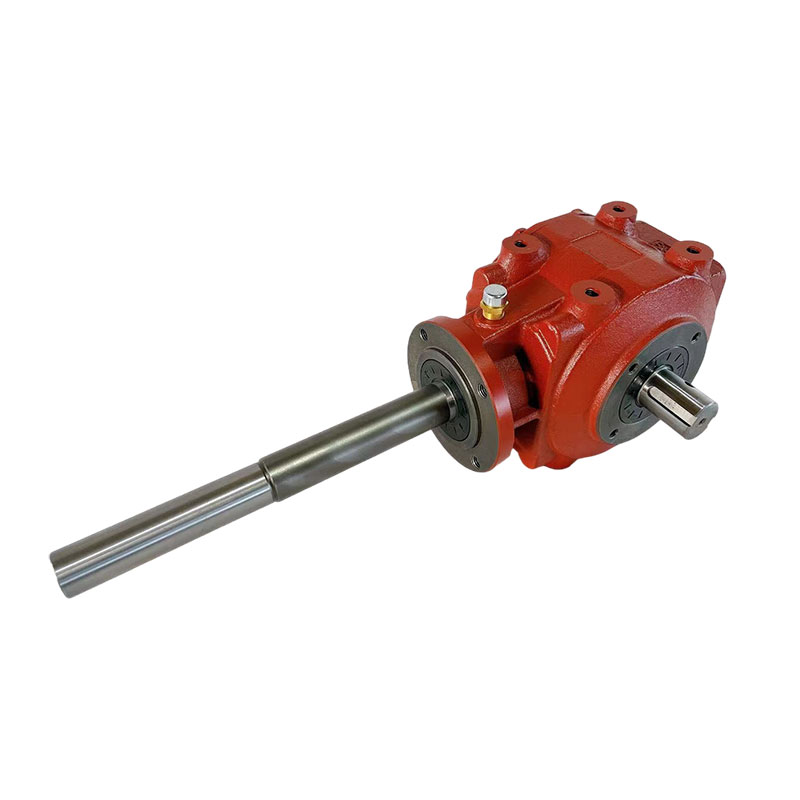Agriculture Gearboxes: The Heart of Agricultural Machinery
2025-04-28
When we think of agriculture, our minds often go to fields, crops, and harvesting equipment, but one of the most essential yet often overlooked components is the agriculture gearbox. This critical piece of machinery plays a key role in transferring power and motion, ensuring that agricultural tools and machines work efficiently and effectively. Whether it's a tractor, combine harvester, or irrigation system, agriculture gearboxes are integral to modern farming.

In this article, we’ll take a deep dive into what agriculture gearboxes are, how they work, and why they are so vital for farming operations.
What is an Agriculture Gearbox?
An agriculture gearbox is a mechanical device that changes the speed, torque, and direction of power from a machine’s engine to the working parts of agricultural machinery. It plays a key role in the operation of many farming tools, ensuring that the machinery operates smoothly, efficiently, and safely.
Agriculture gearboxes are typically used in a variety of farming equipment, including:
- Tractors
- Harvesters
- Mowers
- Sprayers
- Irrigation systems
These gearboxes are designed to handle the demands of tough agricultural work, which often involves heavy loads, high torque, and varying speeds.
How Do Agriculture Gearboxes Work?
Agriculture gearboxes function by converting the power generated by an engine (or motor) into the right form of mechanical energy needed to power the various components of agricultural machinery. They achieve this by using a series of gears, which mesh together to transmit force in a controlled manner.
Here’s a basic breakdown of how they work:
1. Input Shaft: The engine or motor produces rotational energy, which is transferred to the input shaft of the gearbox.
2. Gears: Inside the gearbox, various gears are arranged in a specific ratio. These gears adjust the speed and torque of the input power to meet the operational needs of the machinery.
3. Output Shaft: The adjusted power is then transferred to the output shaft, which sends it to the agricultural machinery’s working components, such as blades, wheels, or hydraulic systems.
The beauty of a gearbox is its ability to control the output power, ensuring that the machinery operates at the correct speed and efficiency required for the task at hand. For instance, a mower might require high speed and low torque, while a tractor might need low speed and high torque for plowing fields.
Types of Agriculture Gearboxes
Agricultural gearboxes come in a variety of types, each designed for specific applications. Some common types include:
1. Worm Gearboxes
Worm gearboxes are known for their ability to handle heavy loads while offering high torque output at low speeds. These are often used in equipment that requires reliable power transmission, such as irrigation pumps and grain augers.
2. Bevel Gearboxes
Bevel gearboxes are used when the direction of the drive needs to change by 90 degrees. This type of gearbox is often found in equipment such as combine harvesters and tillers, where power needs to be transmitted in different directions.
3. Planetary Gearboxes
These gearboxes are known for their compact design and ability to handle high torque loads efficiently. Planetary gearboxes are commonly used in machinery like tractors, harvesters, and cultivators, where space-saving and durability are important.
4. Helical Gearboxes
Helical gearboxes are ideal for transmitting power at higher speeds with low noise and vibration. These gearboxes are often found in machinery that needs to operate quietly and efficiently, such as fertilizer spreaders or irrigation systems.
5. Spiral Bevel Gearboxes
Spiral bevel gearboxes are similar to bevel gearboxes but with a spiral tooth design, which allows for smoother operation and greater load capacity. These are commonly used in tractors and mowers where smooth power transfer is critical.
Why Agriculture Gearboxes Are Essential
Agriculture gearboxes are the backbone of many farming operations. Here’s why they are so essential:
1. Efficiency
Gearboxes allow for the precise control of speed and torque, which means farming equipment can operate at peak efficiency. Whether it’s plowing, harvesting, or spraying, gearboxes ensure that the right amount of power is delivered to each task, preventing waste and ensuring smooth operations.
2. Durability
Agriculture gearboxes are designed to withstand the harsh conditions of farming environments. They are built to handle dust, mud, moisture, and extreme temperatures while maintaining reliable performance. Given that farming machines often operate for long hours under heavy load, durability is crucial.
3. Cost-Effectiveness
Without gearboxes, machinery would not be able to adapt to different tasks effectively, leading to inefficiencies and additional wear on the machine. By ensuring that equipment can be used across various tasks with the right power settings, gearboxes help farmers save time and money in the long run.
4. Adaptability
Gearboxes help farming equipment adjust to different needs. For example, a tractor can switch from a high-speed mode to a low-speed, high-torque mode when switching from road travel to plowing. The versatility provided by gearboxes helps equipment perform a wide range of tasks, from planting to harvesting.
5. Precision
Many farming tasks require a high level of precision, such as harvesting or seeding. Gearboxes provide that precision by regulating the speed and torque of equipment, ensuring that operations are carried out accurately.
Choosing the Right Agriculture Gearbox
When selecting an agriculture gearbox, there are several factors to consider:
- Application Needs: Different tasks require different types of gearboxes. Make sure to select a gearbox that suits the machinery you are using and the tasks you are performing.
- Torque and Speed: Assess the torque and speed requirements for your equipment. Higher torque is needed for tasks like plowing, while higher speeds are ideal for mowing or tilling.
- Material and Build Quality: Look for gearboxes made from durable materials like steel or cast iron, which can withstand the harsh environments of farming.
- Maintenance: Opt for gearboxes that are easy to maintain and come with readily available spare parts to ensure the longevity of the machinery.
Conclusion
Agriculture gearboxes are indispensable components in the world of farming. From their role in ensuring machinery operates efficiently to their ability to provide power and durability under tough conditions, these gearboxes make modern farming operations possible. Whether you’re plowing fields with a tractor, harvesting crops with a combine harvester, or irrigating your land, agriculture gearboxes are the unsung heroes that keep everything running smoothly.
Investing in the right gearbox for your equipment is crucial for maximizing efficiency, ensuring durability, and boosting productivity. So, next time you’re out in the field, take a moment to appreciate the critical role that agriculture gearboxes play in the success of modern farming.


